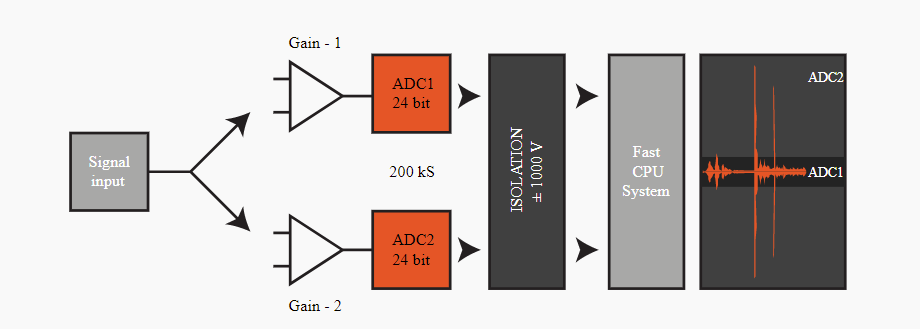Problem:
Setting the optimum gain for DAQ Channels using Analog to Digital Converter.
Sometimes engineers have a signal which is less than 5 volts. However, at other times it can range towards 100 Volts. Therefore, if the resolution of the Analog to Digital Converter is set to 0-5V data, the system will be completely overloaded when the signal goes past that. But if it is set to 100V, the resolution will be poor when signal is within 5V. No point using two channels set to different gains. As this would increase the number of data acquisition systems required and make analysis of data difficult.
Solution:
Dewesoft’s DualCoreADC® Technology
How:
Using two separate 24-bit Analog to Digital Converters per channel. This automatically switches them between real time and a single seamless channel. Therefore, the two ADCs always measure the high and low gain of the input signal. It also operates with slow signals such as most thermocouples.
Advantage for Dewesoft DAQ:
With DualCoreADC technology, the SIRIUS Data Acquisition Systems achieve more than 130 dB signal to noise ratio and more than 160dB in dynamic range. This is 20 times better than typical 24 bit systems with 20 times less noise.
Dewesoft’s DualCoreADC –based SIRIUS DAQ systems offer sample rates up to 200 kS/s per channel and they convert analog wave forms into digital.
What happens if you require a system that provides channels with high dynamic range and anti-aliasing capabilities, but much higher sample rates on other channels?
See the section on Hybrid ADC Technology located here. By clicking you will learn about the most important data acquisition technologies that Dewesoft has invented and developed.
To learn more about Dewesoft’s DAQ and Software, contact us.
